When I wrote about my spontaneous round-the-world trip last week, I mentioned that I hadn’t yet booked the return segment from Tokyo, but that I was planning to book an Avios multi-carrier award for that purpose.
I’m constantly hunting for novelty when I’m on the road, and since I wouldn’t be spending too much time actually exploring new places on this trip, I decided that exploring a new award chart sweet spot that I hadn’t used before was the least I could do. And having written about the Avios multi-carrier award last year and sung its praises many times since, I decided it was finally time to put this one into practice.
I promised you guys an update on how the story played out, so consider this post a hybrid between my usual Impressions installment right after a trip and a fact-finding mission on the Avios multi-carrier award. Here we go.
ACT I
Interior, SBB train from Verbier to Zurich, dusk.
Having finished up a second day of skiing in Verbier, I was now headed for my reservation at the Kameha Grand Zurich for the evening, before my scheduled flight the next day to London and then Tokyo onboard ANA 777 new business class.
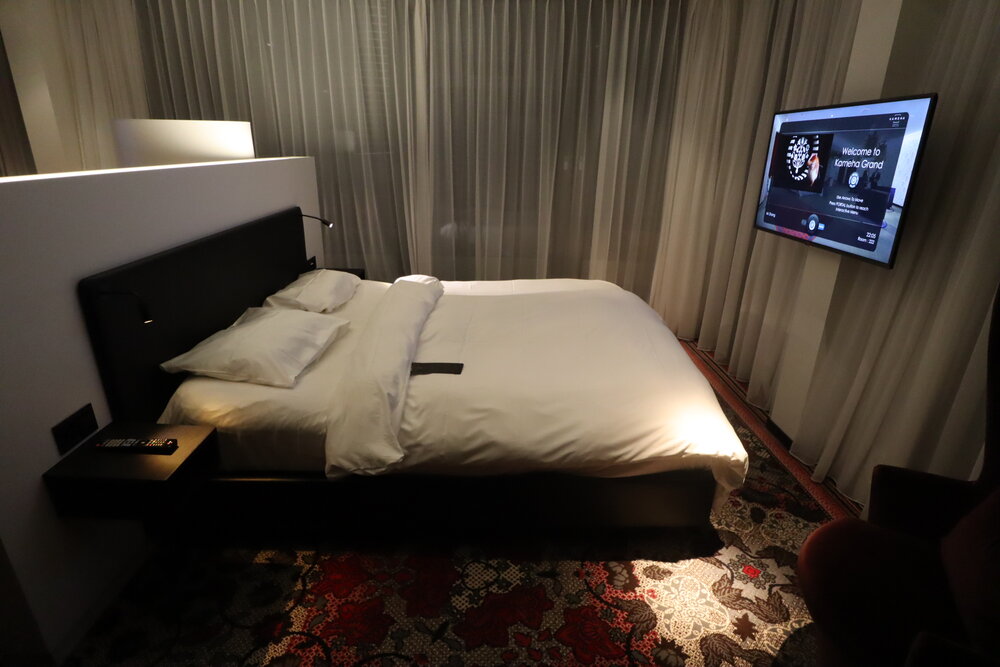
Kameha Grand Zurich, Autograph Collection
It occurs to me that now would be a great time to start booking, or at least thinking about booking, the remainder of my trip to get me home from Tokyo.
I decided to use the Avios multi-carrier award to get home from Japan on this trip, and then also to start off another trip at some point in the future.
Remember, when making a new Avios multi-carrier booking, you have the entire upcoming year in which to plan your travel. So my thinking was to book, simultaneously on the same award, a flight from North America to Europe as part of my summer trip to the Euro 2020 football tournament, for which I hadn’t booked anything yet thus far.
The only problem? There were zero available seats in Japan Airlines First Class or business class to any of their North American gateways over the coming few days at the moment, even though I had seen a few seats on the same days just shortly before.
Chalking this up to the mercurial beast that is last-minute award availability, I decided I’d check the Alaska website (which is my favoured way to search for JAL availability) much more diligently from now on, so that I can catch any availability that appears before someone else snags it.
ACT II
Interior, Swiss Business Lounge (D Gates) at Zurich Airport, day.
There’s about 20 minutes to go until boarding is called for my Swiss flight to London, and having seen zero JAL premium seats on the Alaska search engine all day, I decide to try searching one last time. And lo and behold, one First Class seat had opened up on the Tokyo–Chicago route!
This was the exact same route that I had flown JAL First Class two years ago, which had been one of the best flights of my life, so I knew I was in for a real treat if I managed to book it again.

The only problem? I had no experience booking an Avios multi-carrier award over the phone, and I wasn’t sure if 20 minutes would be enough to get it all done. But I decided that I may as well give it a try, since the award space could well disappear if I waited until I was in Tokyo.
Ringing up the British Airways Avios US contact number (+1 800 452 1201) using Skype, I was put through an agent within a minute – certainly a far smoother experience than calling, say, Aeroplan these days.
I let the agent know that I’m looking to book a multi-carrier award involving more than two partner airlines (if it’s just a single partner airline, or a single partner airline plus British Airways, then it’s priced according to the standard Avios chart).
He seems to be familiar with my request, so I proceed to feed him the flights I’m looking for one-by-one.
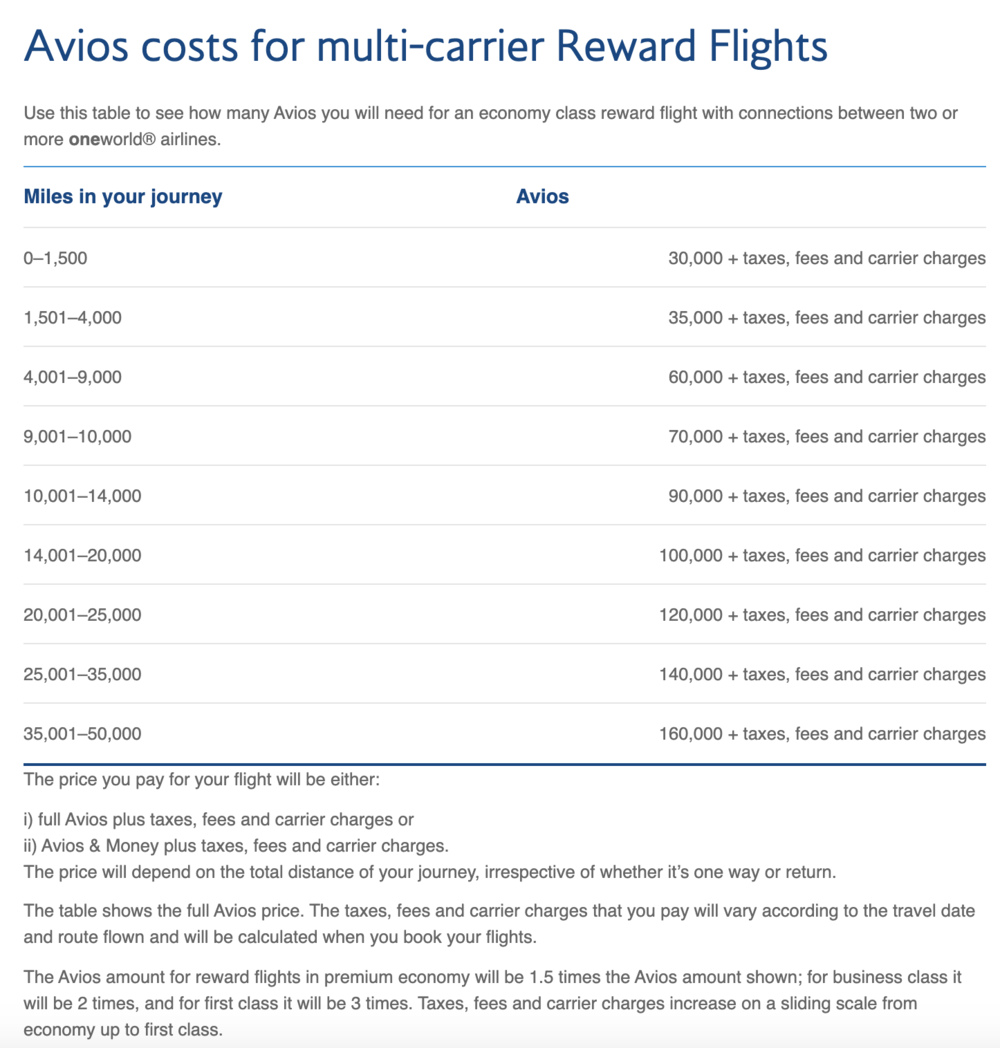
I’ll spare you the full details of the exact routing at this point, because it wasn’t the routing that I actually ended up booking. The salient details, for now, are as follows:
-
I would start out with the Tokyo–Chicago flight on Japan Airlines First Class in two days’ time
-
That would be followed by a few subsequent flights on British Airways and Malaysia Airlines (to make sure we had at least two Oneworld partners on this booking)
-
The first of those flights was scheduled for sometime in the summer, to help me get to Europe for my Euro 2020 trip
-
-
There were five segments on the ticket in total, plus one open-jaw, which falls within the allotment of eight segments (allowing for seven stopovers) and one open-jaw
I knew that British Airways flights usually came with hefty fuel surcharges, but my thinking at the time was that Japan’s fuel surcharge regulations would limit the surcharges on this ticket, since the overall ticket would be originating in Tokyo.
After taking the details of my flight, the agent said he had to put me on hold for a while to calculate the number of Avios required and the taxes and fees. I went to board my flight at this point, and only after I had taken my seat onboard did the agent return.
He confirmed the number of Avios required, which matched my expectation, but also mentioned that the taxes on this “complex itinerary” would have to be calculated manually by the Fares department. He said that British Airways would send me an email after the taxes had been calculated, and I’d have to call back to complete payment and finalize the ticket.
Takeoff for London was imminent, and the agent did say that the email should be coming through “by the time I land”, so I was satisfied with that for now.
ACT III
Exterior, Ikebukuro JR Rail Station, Tokyo, night.
Anyone who’s been to Tokyo a few times will naturally have their personal favourite ramen joints that they keep returning to, and mine is Mutekiya, a 17-seater in the Ikebukuro district whose nightly queue outside its doors consistently snakes all the way around the street corner.
I embarked on my pilgrimage there after landing in Haneda, stopping by a WeWork to get some work done, and then checking in to my capsule hotel for the night at the 9 Hours Shinjuku North.

Mutekiya Ramen
It was 9pm at this point, and British Airways still hadn’t emailed me, even though my Japan Airlines flight would be departing the next morning at 10am. To tell you the truth, I was starting to get a little concerned, especially since no other seats had opened up on Japan Airlines flights during the coming few days.
After about half an hour’s wait outside Mutekiya’s doors (which is mercifully short by their usual standards), I finally sat down for my meal. And just as I began working my way through a rather left-field order this time of tonkotsu with garlic and onion, an email from British Airways landed in my inbox, inviting me to call them back.

Beautiful. After setting my phone aside for now to dust off my ramen with the requisite enthusiasm, I called British Airways on the walk back to the train station. Again, I was put through to an agent instantly.
The agent confirmed that the ticketing team had calculated the taxes and fees on my booking, and that in order to finalize the ticket, I just needed to give her my credit card information to pay the total fees of… $1,280 Canadian dollars.
Hold up hold up hold up – that was way more than I was expecting.
I had assumed that Japan’s regulations would greatly suppress the fuel surcharges on any British Airways flights, but clearly, those British Airways surcharges were a far more formidable adversary than I had expected.
Now, at this point, I could’ve relinquished the entire ticket and gone back to square one, but that might require another whole day for British Airways to calculate the taxes, and time was running out before my Japan Airlines First Class flight was taking off the next morning. If I wanted to be on that flight, I needed to either pony up the $1,280 right then and there, or think quickly and choose another routing that would hopefully be less costly.
Thankfully, the agent I was dealing with seemed to be quite competent: she was familiar with the Avios multi-carrier award and how it worked, and was also willing to help me search for availability on various routes and dates that I threw her way.
So in the end, after some quick work on my phone using Google (to verify the existence of certain flight routes), Great Circle Mapper (to look at flight distances), and the British Airways website (to hunt for availability on my end), I got the agent to put together the below simpler routing:
-
Japan Airlines First Class from Tokyo Narita to Chicago, departing the next day
-
This would be the flight that got me back to North America to finish off my spontaneous round-the-world trip
-
-
Iberia business class from Boston to Madrid, scheduled for June 2020
-
This flight would bring me over to Europe for my planned Euro 2020 trip in the summer
-
-
Iberia economy class from Madrid to Tokyo Narita, scheduled for a randomly chosen date in the summer
-
While I didn’t have any specific plans to fly between Spain and Japan, I decided to throw this in there to “complete” the multi-carrier ticket. Plus, who hasn’t dreamed of flying Iberia’s famous economy product at some point, where I hear they serve a particularly tasty portion of microwaved jamón for the appetizer?
-

The agent confirmed the number of Avios required, which again matched my expectation – as you can see above, the total distance flown came to 16,391 miles, so I was charged the Avios cost for the distance band of 14,000–20,000 miles based on the chart above.
The agent then proceeded to work on the taxes. The great news here is that she was able to manually calculate the taxes with her team immediately on the same call, rather than requiring a call-back like the first time – perhaps because it was the simpler itinerary this time (three flights instead of five), or perhaps because there was simply no room for further delay in the ticketing process, since the first flight would be departing the very next morning.
As I expected, the elimination of British Airways flights did indeed go a long way towards reducing the taxes, which came to only $422 on this revised itinerary.
I was much happier with that, and fully intended to recoup that value in food and drink (and then some) onboard JAL First Class the next day, so I went ahead and gave the agent my credit card information to sort everything out once and for all.

And with the itinerary landing in my inbox, I was able to check-in on the Japan Airlines website immediately as I took the train back to Shin-Okubo station for five hours of sleep in my capsule hotel (a cool experience, I might add, but not necessarily one that I’m looking to make a habit out of), before an early-morning journey to Narita Airport.

9 Hours Shinjuku North capsule hotel
The British Airways Avios Multi-Carrier Award: Lessons Learned
From this experience (and from chatting to others who’ve booked similar trips), I’ve gleaned a few more data points about the British Airways Avios multi-carrier award:
-
Quite a few Avios agents, but not all of them, seem to be familiar with the award.
Both the agents I dealt with knew immediately that we were looking at the multi-carrier award chart, not the regular Avios award chart. The key point for them was that itineraries involving two or more Oneworld partners would be subject to this other chart.
However, other people’s data points seemed to indicate that some agents didn’t really know what they were doing, so perhaps one or two rounds of hanging-up-and-calling-again would be required.
-
The Avios agent needs to call their “Fares” desk to calculate the taxes, and this can be an overnight process if it’s a complex itinerary.
During the first call, the agent takes down all your segments and verifies that it fits within the rules (remember, you’re allowed up to eight segments, seven stopovers, and one open-jaw).
If it’s a relatively simple itinerary, the agent should be able to calculate the taxes right then and there – my first agent attempted to do so, before confirming that it was too complex and that it needed to be sent to the Fares department for manual processing. If that happens, you can expect an email inviting you to call British Airways back within 24 hours, which is roughly how long it took for my email to arrive.
-
The routing must be logical.
This wasn’t something that I tested, but rather based on other data points (since both of my proposed routings were straightforward circumnavigations in one continuous direction).
Your routing must be somewhat logical with no backtracking, and while I’m not 100% positive on this, I think a common criterion is that you shouldn’t be backtracking among the three IATA “zones” (Zone 1: Americas; Zone 2: Europe, Middle East, and Africa; Zone 3: Asia and Oceania).
So North America–Europe–Asia–Australia–North America should be fine, but North America–Europe–Asia–Europe–Asia won’t really work. This seems to be very much at the agent’s discretion, too, but at the end of the day, if the Avios agent deems that your routing isn’t logical, you won’t be allowed to book it.
-
You’ll get killed on fuel surcharges unless you originate in one of the countries with regulations, and even then, you must be careful.
British Airways Avios, as a program, is notorious for leveraging high fuel surcharges at every opportunity, and that extends to the multi-carrier award as well. Someone I know who attempted to book an award involving a handful of British Airways and Qatar Airways segments departing out of New York JFK, for example, got quoted a whopping $1,772 in total taxes and fees!
The usual workaround is that you must originate in one of the countries that regulate fuel surcharges, such as Japan, Hong Kong, Australia, New Zealand, or Brazil. Even then, however, it seems that British Airways flights still attract rather hefty fees, as the $1,280 quote on my initial attempt proved.
Overall, the surcharge calculation is still something of a black box to me, but if you can plan ahead and originate in one of the low-surcharge countries while doing your best to avoid British Airways flights, you should be looking at a co-pay in the region of $500 at most.
-
The change policy is very generous, since the standard change policy for Avios rewards applies.
This is something that the second Avios agent confirmed with me. If you need to make a change to your Avios multi-carrier award, you’ll simply pay the standard Avios change fee of $58 (US$55 for US residents), the Service Centre fee of $25 (US$25 for US residents), as well as any additional Avios or taxes that may be charged based on the new routing.
That’s a pretty generous policy, and it means that you could use the first few legs of your Avios multi-carrier award on a few upcoming trips that you have in mind, and then change the remaining segments at a later date for future trips that you haven’t even conceived of yet.
Another point here relates to the nature of airline tickets: at the time of booking, you’re allowed to travel over the upcoming one-year period; however, after you have flown the first segment on a ticket, you may change the remaining segments to any date within one year of flying the first segment.
So in theory, you could potentially use a single Avios multi-carrier award to fly on many separate trips over a two-year period from the ticketing date, especially in light of the relatively low change fee.

-
Finally, you may have noticed that I’ve intentionally been a little coy on some details in this post, including the number of Avios that the whole thing actually cost. These details are left as an exercise for the reader.
ACT IV
Interior, Japan Airlines First Class at 35,000 feet, day.
I’ll conclude with a quick mini-review of Japan Airlines First Class. The experience hasn’t changed too much from my maiden flight on JAL First two years ago, so I won’t be reviewing it again, but that doesn’t mean it was any less spectacular.
The seat is by no means the most modern or cutting-edge; in fact, it’s arguably one of the more outdated First Class products out there among the world’s best airlines, but to its credit, it leverages its red carpets and polished-wood finishes to maintain an old-school charm to great effect.
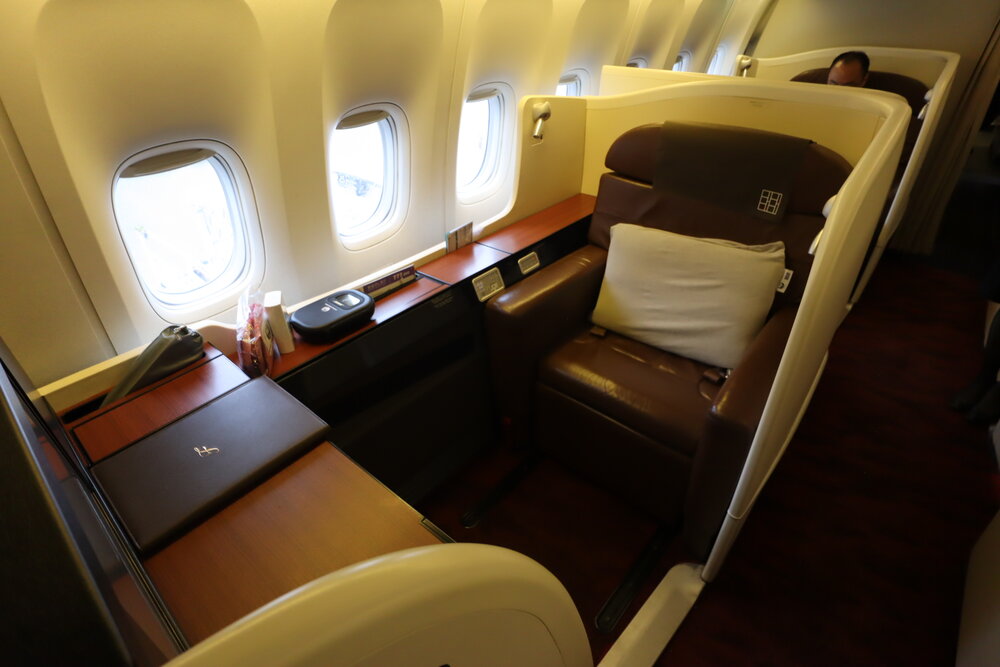
Japan Airlines First Class
None of that really matters, though, because Japan Airlines First Class is all about the food. I was utterly blown away by the onboard meals and snacks when I flew with them two years ago, and I found myself utterly blown away yet again this time around.
I decided to take a different approach to this flight compared to my previous First Class experiences. While I’m usually one to stay awake the whole time to truly “maximize”, this time I was feeling downright shattered from the relentless travel of the past few days, so I decided to take advantage of my excellent lie-flat bed and sleep for the first six hours.
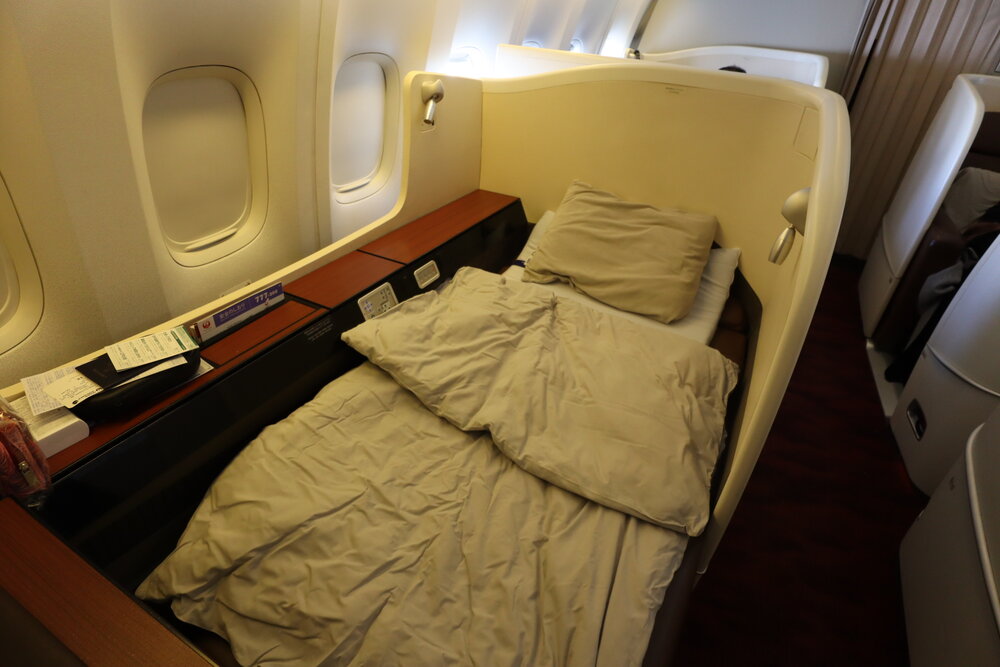
Nap time first!
That definitely turned out to be the correct decision, because I woke up in a ravenous mood. When the flight attendant came by to check on me, I emphatically declared with a huge smile on my face, “I’m ready for my meal now! And some Salon champagne, please!”
The meal began with an amuse bouche, followed by the caviar, which is actually an appetizer from the Western menu that the crew is nonetheless happy to set aside for those who order the Japanese meal.
[foogallery id=”17251″]
That was followed by the customary Japanese appetizer of “five delicacies”, the owan soup dish, the duo of raw morsels (in this case, a particularly lavish selection of wagyu beef and sea urchin), and the main course itself.
No lie – every single piece of food, without fail, made me pause and whisper “woah” to myself under my breath upon the first bite. And that trend continued with my subsequent selections from the snack menu (ramen and udon in quick succession, as usual) and the light meal served shortly before arrival.


On top of that, a rotating beverage selection – from Salon champagne, to Japanese sake, to a fresh pot of French-pressed coffee, to Hibiki Blender’s Choice whiskey, and then back to Salon – kept my spirits nicely elevated throughout the latter half of the flight.
[foogallery id=”17255″]
[foogallery id=”17259″]
Honestly, perhaps it’s my bias as a lifelong purveyor of Japanese cuisine speaking, but if I had to recommend one First Class product that’s relatively “easy” to book on points that I think everyone should try, it’s gotta be JAL for me.
The onboard gastronomic experience is consistently the very best of the best, and whether you’re redeeming 70,000 Alaska miles or booking an Avios multi-carrier award, it’s well within reach for anyone who’s willing to put in a bit of legwork to try it for themselves.
Conclusion
I’m glad to have made use of the Avios multi-carrier award sweet spot, which contains tremendous potential for anyone who’s willing to spend some time learning and understanding it, especially in light of the 30–50% transfer bonuses we’ve seen to Avios in recent times.
This booking was very much designed as a proof-of-concept, allowing me to conclude one trip while setting up another trip in the summer, and there’s definitely room for far more optimization than what I booked – after all, I only used three segments out of the total of eight that I was allowed on a multi-carrier booking.
If you’re looking to maximize this sweet spot for yourself, one product that you surely must include on your multi-carrier award is Japan Airlines First Class, which I really can’t recommend enough as one of the most outstanding ways to fly across the Pacific.
And finally, as for my spontaneous trip itself, I must say that while I enjoyed the novelty and thrill of it, I wasn’t a huge fan of booking stuff “on the fly” and not knowing exactly where I’d be sleeping and working from over the immediate short term, and it all got very exhausting very quickly. As much as I’ll cherish the memories from this blitzkrieg journey around the world, I think I’ll be sticking to taking more pre-planned and purposeful trips for the most part going forward.




















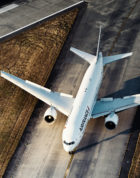



Does each segment has to be a direct flight, i.e. no connection for each segment?
Well, if there were a connection then that would count as two separate segments.
Any experience/thoughts with a routing of North America(east coast)>Australia>Asia>North America(west coast)>South America>North America(east coast)? Using all eight segments and the open jaw in the 25k-35k band? That is a logical route to me reading IATA zones……
Sounds like one of those that works in theory but may be tricky to get past an Avios agent in practice. Definitely worth a try though in my mind!
Wow – great info! Still new to points & miles but have shied away from BA Avios in lieu of Iberia Avios to avoid fuel surcharges. So even though I earn Avios with both carriers – I have transferred them over to the Iberia Avios account. Does Iberia have a similar multi-carrier award?
Good question Mary and not something I’ve looked at before. If they do, you can be sure I’ll cover it at some point!
Say BOS-MAD wasn’t available in J when you booked it … if you later find a J seat in that route and call to change it, would the change fee apply?
I believe so.
As usual you have given the miles and points community valuable information to increase our enjoyment of travel. I can hardly wait to try out this chart.
What this post really shows, however, is the divide between your millennial readers and , may I say your more mature followers.
The fact that you could arrange these flights on your cell phone while eating dinner and walking down the street in Tokyo boggles my mind.
While a younger reader may say” Ho Hum what else is new” , as an older person, I find this extraordinary.
A question though, when you say backtracking in zones would not be allowed, can you backtrack within a zone? ie CDG – FCO – CDG for example.
This was definitely one of the more "on the fly" award booking situations I’ve pulled off 🙂
Backtracking within a zone seems to be at the discretion of the agent. Some data points indicate that it must be a single continuous easterly/westerly direction, while others have been allowed minor backtracks like that.
Salon. Drool.
Neat to see they changed the design on the JL F cup. Looks like I have an excuse to fly them again.
Jay, don’t be that kid who does other people’s homework for them!
🙂
Haha :p
Tease. 3 questions come to mind, but I’m lazy. There are probably 5 if I really get into it.
I wanna know about the BA no-queue call centre. What’s your BA status, please?
I actually have no status, but I somehow seemed to have stumbled on the phone number for Gold members. That’s what the call centre’s automated script said anyway.
I have the same question as Bob. The cryptic nature of your blog post tells me you got this for Y.
the JAL website can actually be pretty good for searching for JAL award space once you get used to it, as you can see the whole month/year summary quite easily
What’s your plan with the final segment in Y? Are you just dropping it? Or are you allowed to upgrade it to J when space becomes available like with Aeroplan?
Who knows. I have a feeling that upgrading to business would be quite costly for me, so maybe I’ll fly it just for the jamón.
Did you get this ticketed at the Y pricing for 100k Avios? That would be unreal